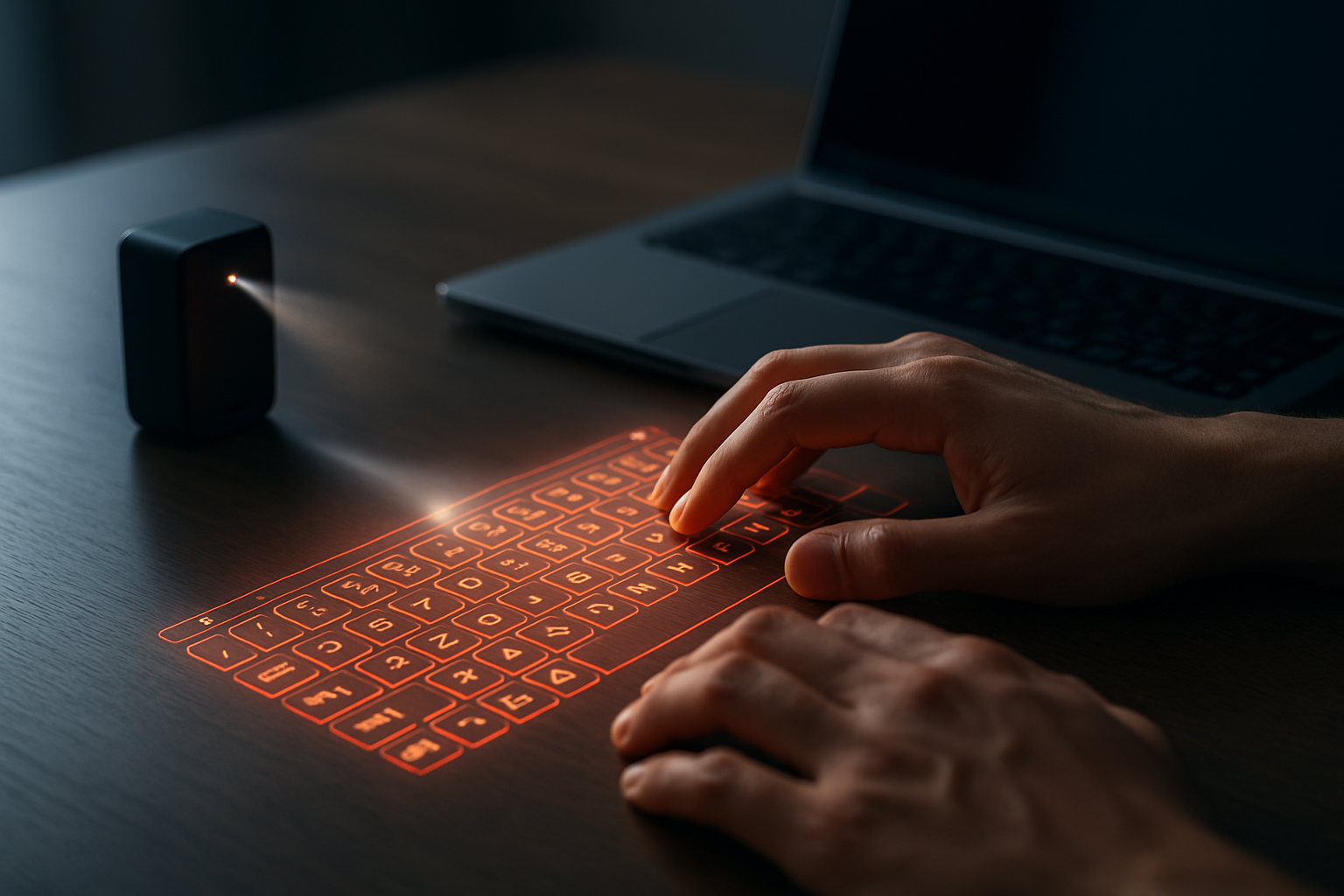Holographic Keyboards: Typing in Thin Air
In the ever-evolving landscape of computer peripherals, a new contender is emerging that could revolutionize the way we interact with our devices. Holographic keyboards, once confined to the realm of science fiction, are now stepping into reality, promising a futuristic typing experience that could redefine our expectations of input devices.

How Holographic Keyboards Work
At the heart of holographic keyboard technology lies a clever combination of optics and sensors. A small projector casts an image of a keyboard onto a flat surface, while infrared sensors track the movement of your fingers. When you “press” a key, the system detects the position of your finger and translates it into a keystroke. This creates the illusion of typing on a physical keyboard, even though you’re interacting with nothing more than light.
The Evolution of Virtual Input
The journey to holographic keyboards has been a long one, rooted in the quest for more portable and flexible input methods. Early attempts at virtual keyboards included laser-projected versions that required special surfaces. However, these were limited in their functionality and adoption. The current generation of holographic keyboards represents a significant leap forward, offering improved accuracy and the ability to work on almost any surface.
Advantages Over Traditional Keyboards
Holographic keyboards offer several potential advantages over their physical counterparts. Portability is perhaps the most obvious benefit—a holographic keyboard can be projected from a device as small as a smartphone, eliminating the need to carry a separate keyboard. This technology also promises enhanced hygiene, as there are no physical keys to harbor germs. Additionally, the layout and size of the keyboard can be customized on the fly, adapting to different languages or user preferences with ease.
Challenges and Limitations
Despite their futuristic appeal, holographic keyboards face several hurdles before they can become mainstream. The lack of tactile feedback is a significant challenge, as many users rely on the physical sensation of keys to type accurately. Current projector technology also struggles in bright light conditions, limiting outdoor use. Battery life is another concern, as the constant projection and sensing require substantial power. Developers are actively working on solutions, including haptic feedback systems and more energy-efficient projection methods.
Real-World Applications
While still in its infancy, holographic keyboard technology is already finding niche applications. Some hospitals are experimenting with holographic interfaces in sterile environments, where traditional keyboards would be impractical. In the realm of virtual and augmented reality, holographic keyboards could provide a more natural way to input text without breaking immersion. As the technology matures, we may see it integrated into smartphones, tablets, and even wearable devices, offering a new dimension of interactivity.
The Future of Typing
As holographic keyboard technology continues to evolve, it has the potential to reshape our interaction with digital devices. Imagine a world where any surface can become an input device, or where your smartwatch can project a full-sized keyboard onto your arm. While traditional keyboards are unlikely to disappear entirely, holographic alternatives could offer a compelling option for specific use cases and environments.
Market Impact and Pricing
Currently, holographic keyboard technology remains largely in the prototype and niche product stage. Existing products on the market, such as laser-projected keyboards, range from $50 to $200, but true holographic versions are expected to command higher prices initially. Industry analysts predict that as the technology matures and production scales up, prices could drop significantly, potentially reaching consumer-friendly levels within the next 3-5 years.
The potential market impact is substantial, with some estimates suggesting that the virtual and projected keyboard market could reach $1 billion by 2025. This growth is driven not just by the novelty factor, but by the increasing demand for flexible, portable input solutions in an increasingly mobile-first world.
As we stand on the brink of this typing revolution, holographic keyboards represent more than just a new way to input text. They embody the ongoing transformation of our digital interfaces, pushing the boundaries of what’s possible in human-computer interaction. While challenges remain, the potential for this technology to create more intuitive, adaptable, and immersive computing experiences is undeniable. The future of typing may well be invisible, but its impact on how we interact with technology could be more tangible than ever.





